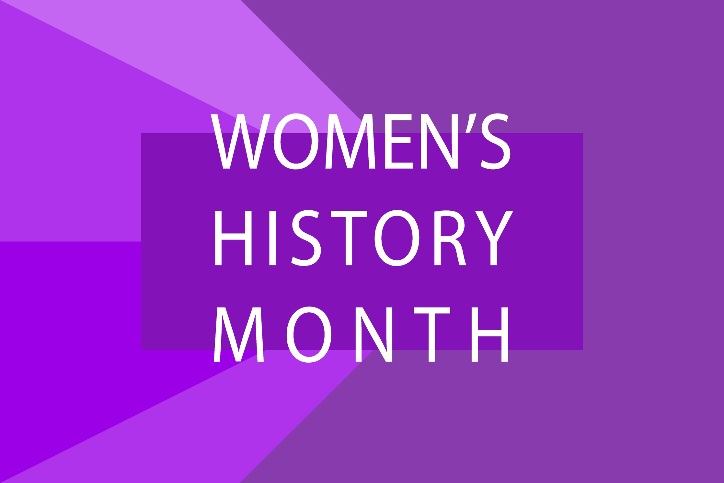
Women in Medicine: A Timeline of 15 Pioneers and Innovators
March is Women’s History Month, which provides the opportunity to look at how women have impacted the practice of medicine and the advancement of patient care in America over the years. From the first female physicians in the 1800s, to groundbreaking medical scientists, practitioners and healthcare leaders in recent decades, women continue to work toward equal opportunity and make their mark in the field of medicine.
According to the American Medical Association, women now make up 36 percent of America’s physician workforce, compared to just 6 percent in 1950. And for the first time in history, 2017 saw more women entering medical school than men.
According to AAMC, women have also accomplished a number of firsts as advanced practitioners, researchers, educators and visionary leaders. AMN Healthcare is proud to acknowledge and celebrate just a few of these women and their accomplishments over the years:
Historic Milestones: A Timeline of Women in Medicine
1849 – Elizabeth Blackwell, MD, became the first woman to earn a U.S. medical degree. After being turned down by 10 medical schools, she was eventually accepted by and graduated from Geneva Medical College in New York. Blackwell also founded the New York Infirmary for Indigent Women and Children to serve the poor in 1857, and the Woman’s Medical College of the New York Infirmary in 1867.
1861 – Mary Edwards Walker, MD, became the first female surgeon in the U.S. Army. Denied a commission as a medical officer because of her gender, Edward volunteered to work on the Civil War battlefields caring for the wounded. She was eventually appointed assistant surgeon of the 52nd Ohio Infantry. After being taken prisoner in 1864, she became the first woman to receive the Congressional Medal of Honor.
1864 – Rebecca Lee Crumpler, MD, became the first black American woman to earn a medical degree. In the post-Civil War period, she cared for freed slaves who did not have access to medical care. She was also one of the first African-Americans to publish a medical book, Book of Medical Discourses.
1877 - Sister Mary Bernard became the first officially recognized nurse anesthetist, working at St. Vincent’s Hospital in Erie, Pennsylvania. Her work began more than three decades before the first school of nurse anesthesia formed in 1909.
1881 – Clara Barton founded the American Red Cross, at the age of 59. Once acclaimed as the “angel of the battlefield” for tending to soldiers during the Civil War, she would go on to lead the Red Cross for 23 years, establishing a new era of relief work and volunteerism, including medical care for victims of disaster.
1931 – Agatha Hodgkins founded the National Association of Nurse Anesthetists, now the American Association of Nurse Anesthetists (AANA). It was the first national association of anesthesia providers in the United States. Early in her career, Hodgkins practiced with surgeon George Crile in Cleveland, and accompanied Crile to Europe to administer nitrous oxide to injured soldiers during World War I.
1947 - Gerty Theresa Cori, PhD, became the first woman to win the Nobel Prize for Physiology or Medicine for discovering how sugar-derived glycogen is used by the body as an energy source, leading to treatments for diabetes and other diseases. The Austro-Hungarian-American biochemist shared the award with her husband Carl Cori and Argentine physiologist Bernardo Houssay.
1953 - Virginia Apgar, MD, devised the first tool to scientifically assess a neonate’s health risks and need for potentially life-saving observation. The 10-point Apgar score is still considered the gold standard for determining the health of a newborn. Apgar was also the first woman to head an academic department and hold a full professorship at Columbia University College of Physicians and Surgeons. In 1959, she became a senior executive with the National Foundation-March of Dimes, where she generated public support and funds for research on birth defects.
1965 - Loretta Ford, EdD, PNP, co-founded the first nurse practitioner (NP) program at the University of Colorado, with Henry Silver, MD. This pediatric nurse practitioner (PNP) program expanded the role of public health nurses to focus on illness prevention and health promotion. Known as the “mother” of the nurse practitioner movement, Ford went on to become the founding dean of the University of Rochester School of Nursing.
1969 - Elisabeth Kübler-Ross, MD, published the pivotal book On Death and Dying, which revolutionized the treatment and understanding of dying patients. This Swiss-American psychiatrist was an advocate for better treatment of the mentally ill and the terminally ill, and is known for defining the five stages of grief. Her work was a catalyst for modern hospice care, living wills and the death with dignity movement.
1970 - Joyce Nichols, PA-C, became the first woman to be formally educated as a physician assistant (PA), studying at Duke University. According to the Physician Assistant History Society, she is also the first African-American woman to practice as a PA. Overcoming poverty, prejudice and other obstacles to achieve her goals, Nichols is also remembered for establishing one of the first rural, satellite health clinics in North Carolina and the nation, where she cared for the underserved.
1986 - Patricia Bath, MD, invented the Laserphaco Probe, which used lasers to treat cataracts more precisely and less painfully than previous methods. She was the first black female physician to patent a medical device and the first female chair of an ophthalmology residency program. She also co-founded the American Institute for the Prevention of Blindness, and is credited with founding the discipline of community ophthalmology, which promotes eye health and blindness prevention in underserved communities.
1990 - Antonia Novello, MD, became the first woman and the first Hispanic to serve as U.S. surgeon general. Novello’s career spanned academia, private practice and the U.S. Public Health Service, where she became a leader in AIDS research. As surgeon general, Novello focused on women with AIDS and neonatal transmission of HIV, encouraged Hispanic/Latino Americans to participate in health issues, and raised national awareness about domestic violence, underage drinking and alcohol abuse.
1998 – Nancy W. Dickey, MD, became the first female president of the American Medical Association. She had previously served as the first female chairperson of AMA’s board of trustees. Board certified in family practice, Dickey developed the AMA Patient Bill of Rights.
2005 – Susan Salka became CEO of AMN Healthcare, the nation’s largest healthcare staffing and workforce solutions company. She joined the company in 1990, and during her tenure, has overseen tremendous growth, diversification and strategic directives. She is a sought-out speaker on healthcare issues, and is actively involved in areas of corporate social responsibility, diversity and inclusion, and gender equality. Salka was named one of Modern Healthcare’s Most Influential People in Healthcare for 2020 for her leadership during the COVID-19 pandemic.



